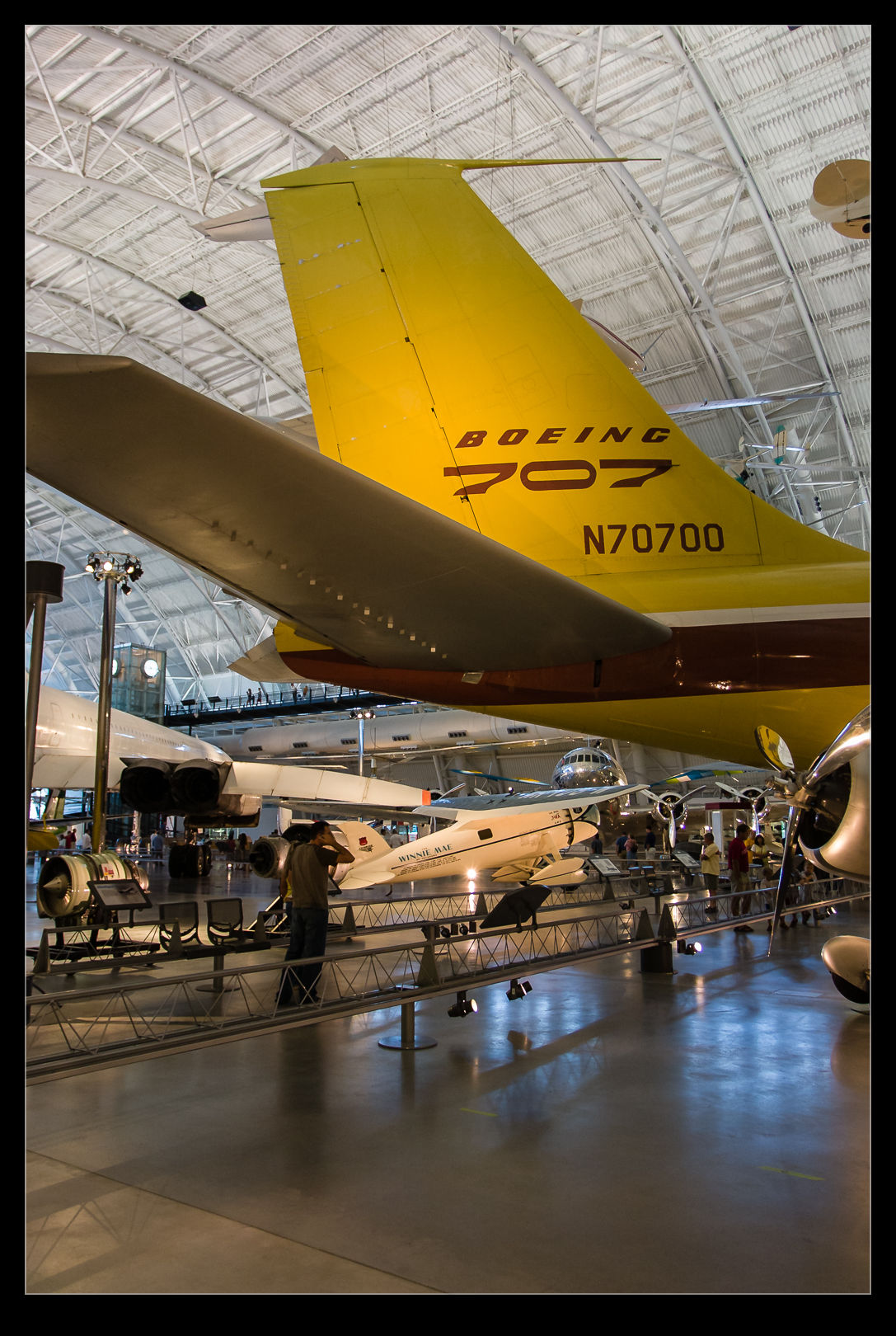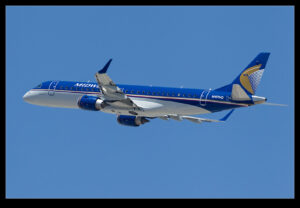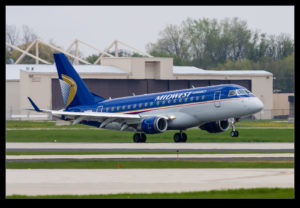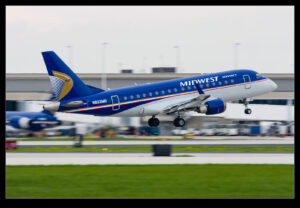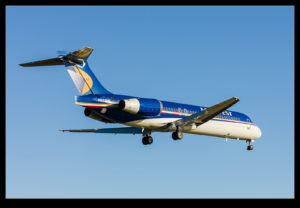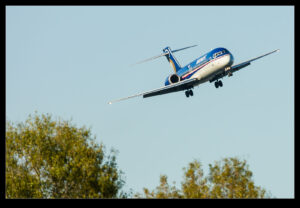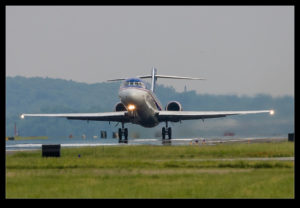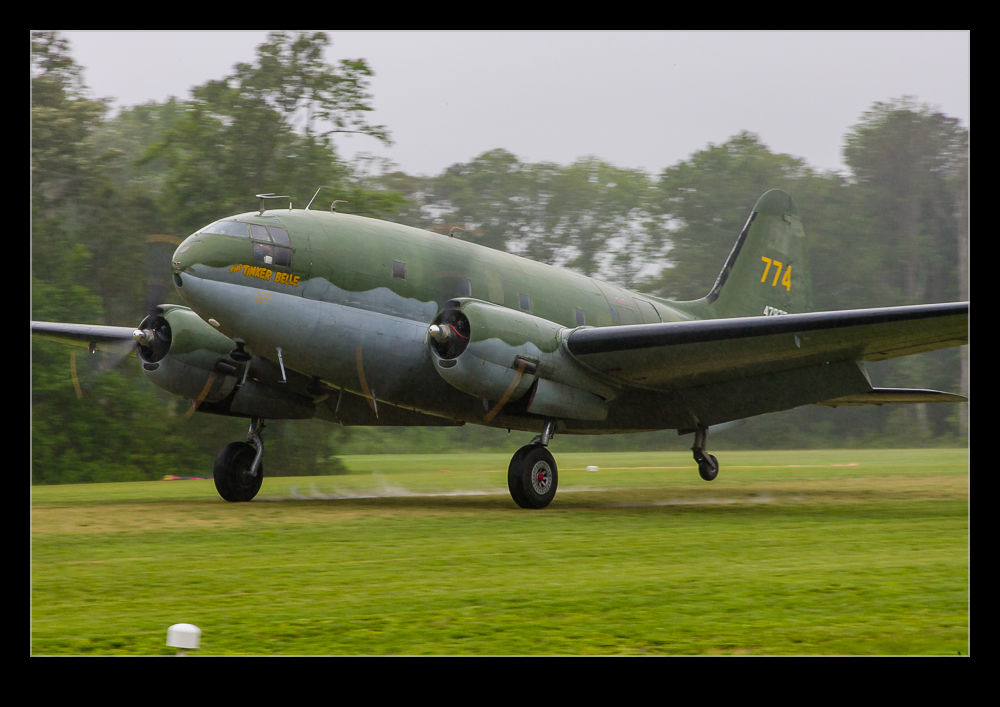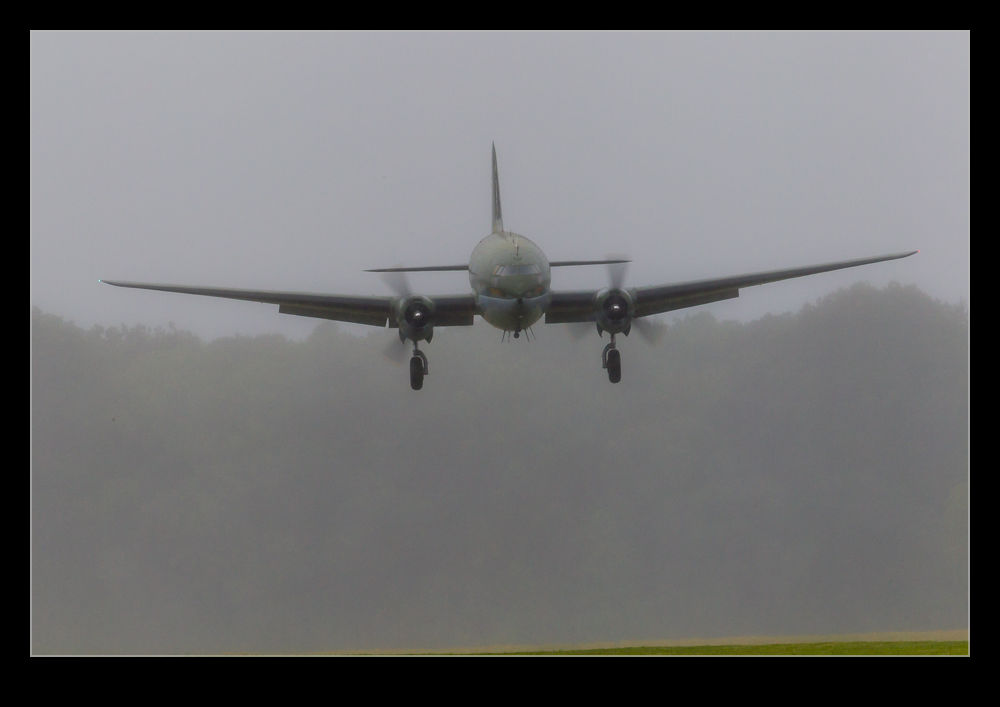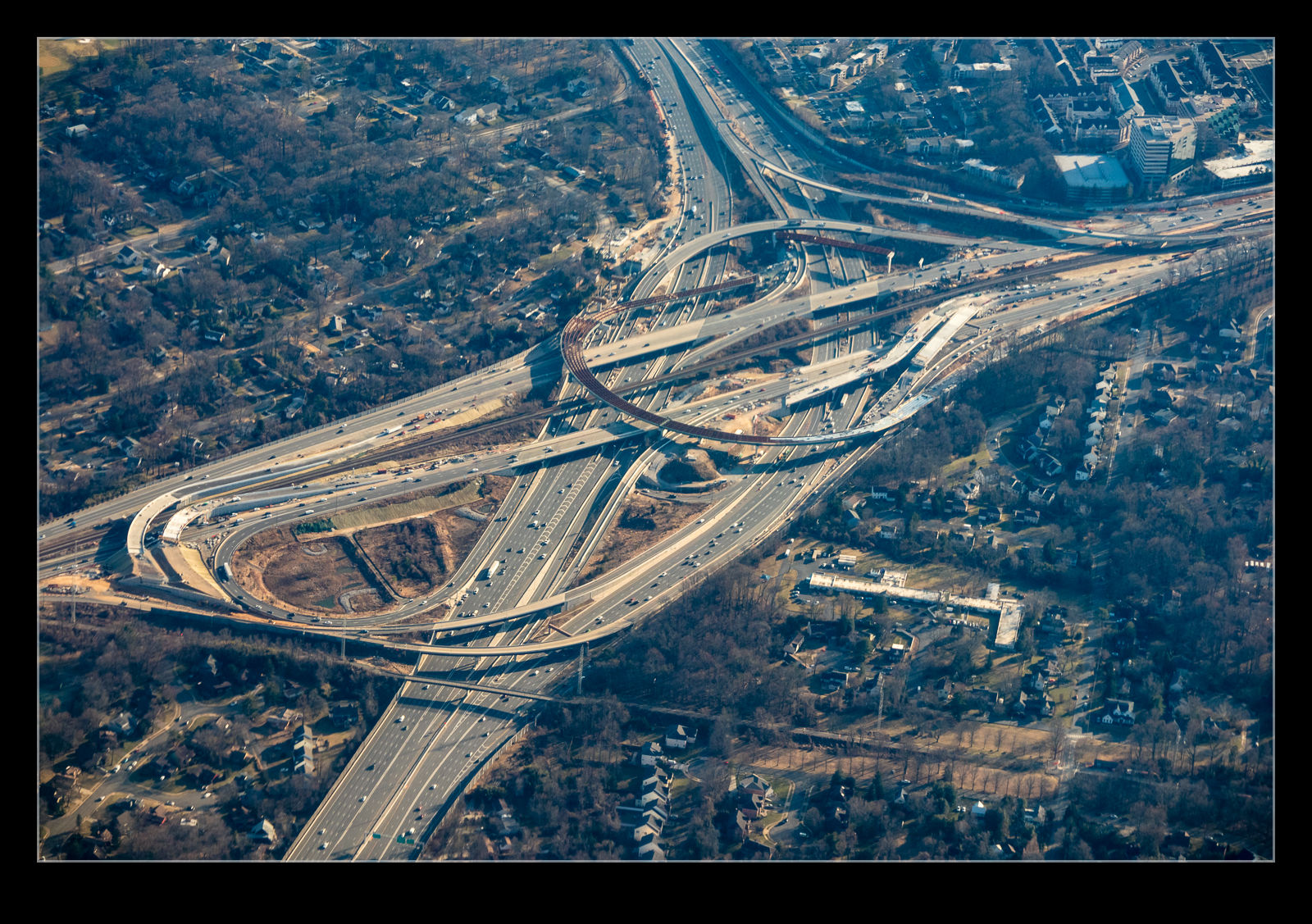 Continuing my theme of aerial photos from my flight to DC, as we got in to the metro area, I could see a major interchange under construction on one of the highways. I’m sure, if I could be bothered, it would be possible to work out which highway this is and where the interchange is being built but I’m not that interested. If you happen to recognize it, I would be fine knowing since that would require no effort on my part! The evening light angle meant the shape of the construction was picked out with more clarity. I wonder when it is due to be completed?
Continuing my theme of aerial photos from my flight to DC, as we got in to the metro area, I could see a major interchange under construction on one of the highways. I’m sure, if I could be bothered, it would be possible to work out which highway this is and where the interchange is being built but I’m not that interested. If you happen to recognize it, I would be fine knowing since that would require no effort on my part! The evening light angle meant the shape of the construction was picked out with more clarity. I wonder when it is due to be completed?
Tag Archives: virginia
JetRed
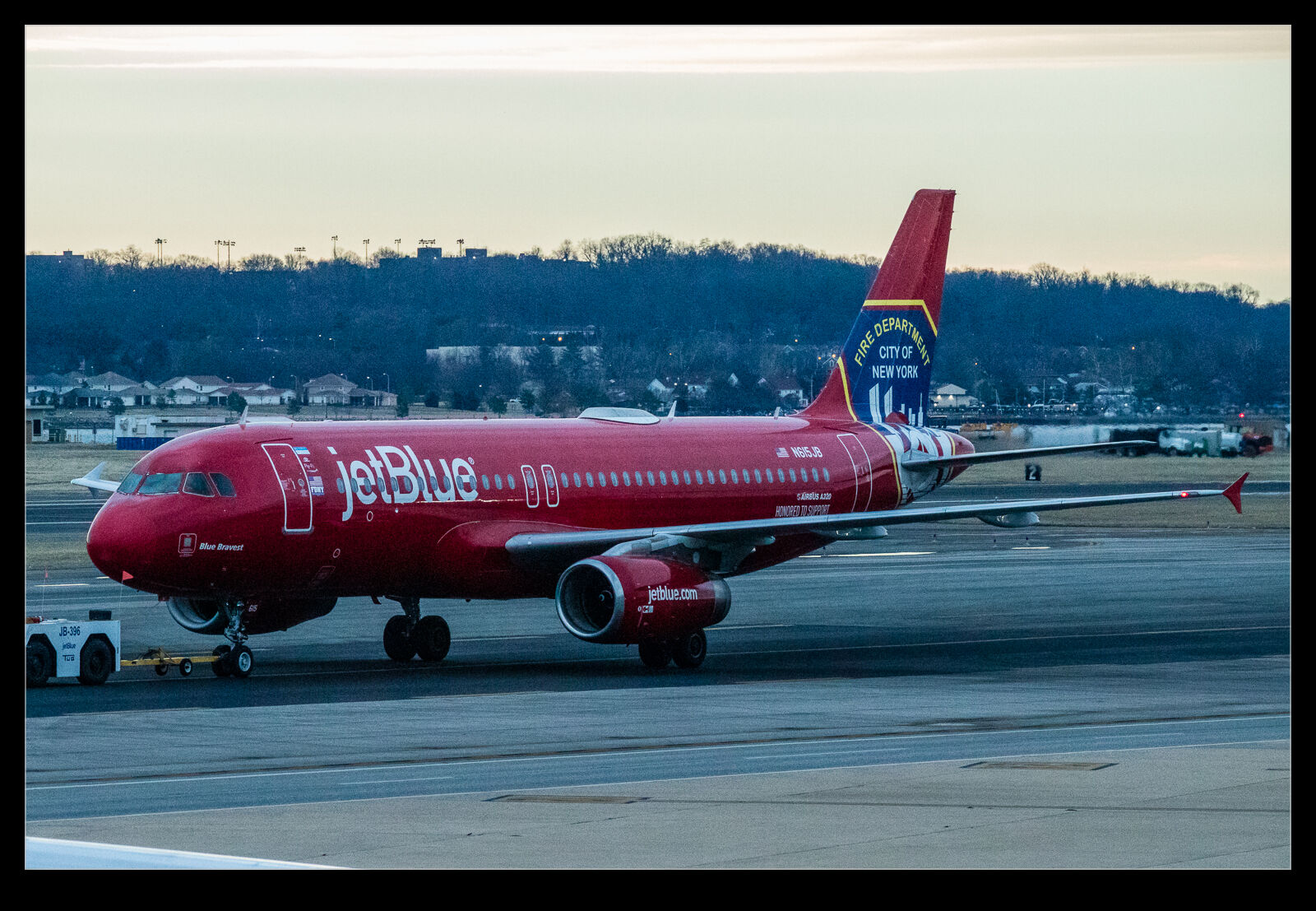 Early morning at Washington National and I was waiting for my flight home after a work trip to DC. As I sat at the gate, a JetBlue aircraft was coming up from the south end of the field. It was painted in a red scheme representative of the fire department of NY. They have a few different special liveries on their jets but a bright red one is quite the opposite of their normal look. Sadly, the light was a bit dull but I wasn’t passing up the opportunity to get a shot, even if it was through the terminal windows.
Early morning at Washington National and I was waiting for my flight home after a work trip to DC. As I sat at the gate, a JetBlue aircraft was coming up from the south end of the field. It was painted in a red scheme representative of the fire department of NY. They have a few different special liveries on their jets but a bright red one is quite the opposite of their normal look. Sadly, the light was a bit dull but I wasn’t passing up the opportunity to get a shot, even if it was through the terminal windows.
Boeing Dash 80
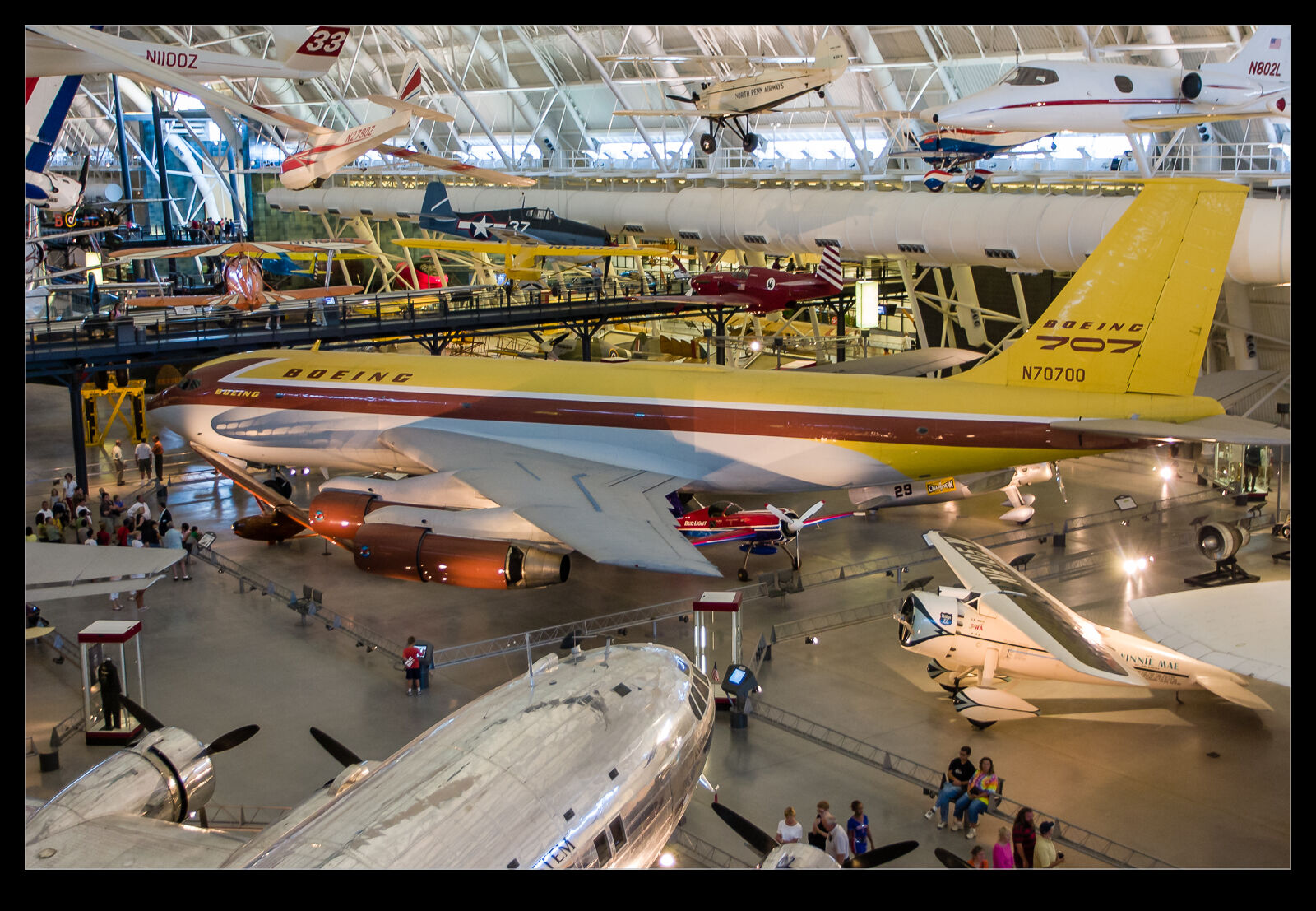 While the Comet may have been the first jet airliner, it was a configuration that was not well suited to development. Boeing put together its development approach to the jet airliner through a project called the Dash 80. The shape of the airframe may look familiar but this was a one off. It was a hand built aircraft and undertook development that then migrated into two further airframes. One was what became the C-135 family while the other was enlarged and became the Boeing 707.
While the Comet may have been the first jet airliner, it was a configuration that was not well suited to development. Boeing put together its development approach to the jet airliner through a project called the Dash 80. The shape of the airframe may look familiar but this was a one off. It was a hand built aircraft and undertook development that then migrated into two further airframes. One was what became the C-135 family while the other was enlarged and became the Boeing 707.
 The Dash 80 get used for all sorts of things but finally ended being donated to the Smithsonian and ferried to the Udvar-Hazy facility at Dulles. That is where I got to see it on a visit there in the mid 2000s. I haven’t been back since and would love to check this place out again. Here are some old shots of this historic jet.
The Dash 80 get used for all sorts of things but finally ended being donated to the Smithsonian and ferried to the Udvar-Hazy facility at Dulles. That is where I got to see it on a visit there in the mid 2000s. I haven’t been back since and would love to check this place out again. Here are some old shots of this historic jet.
FAA Gulfstream
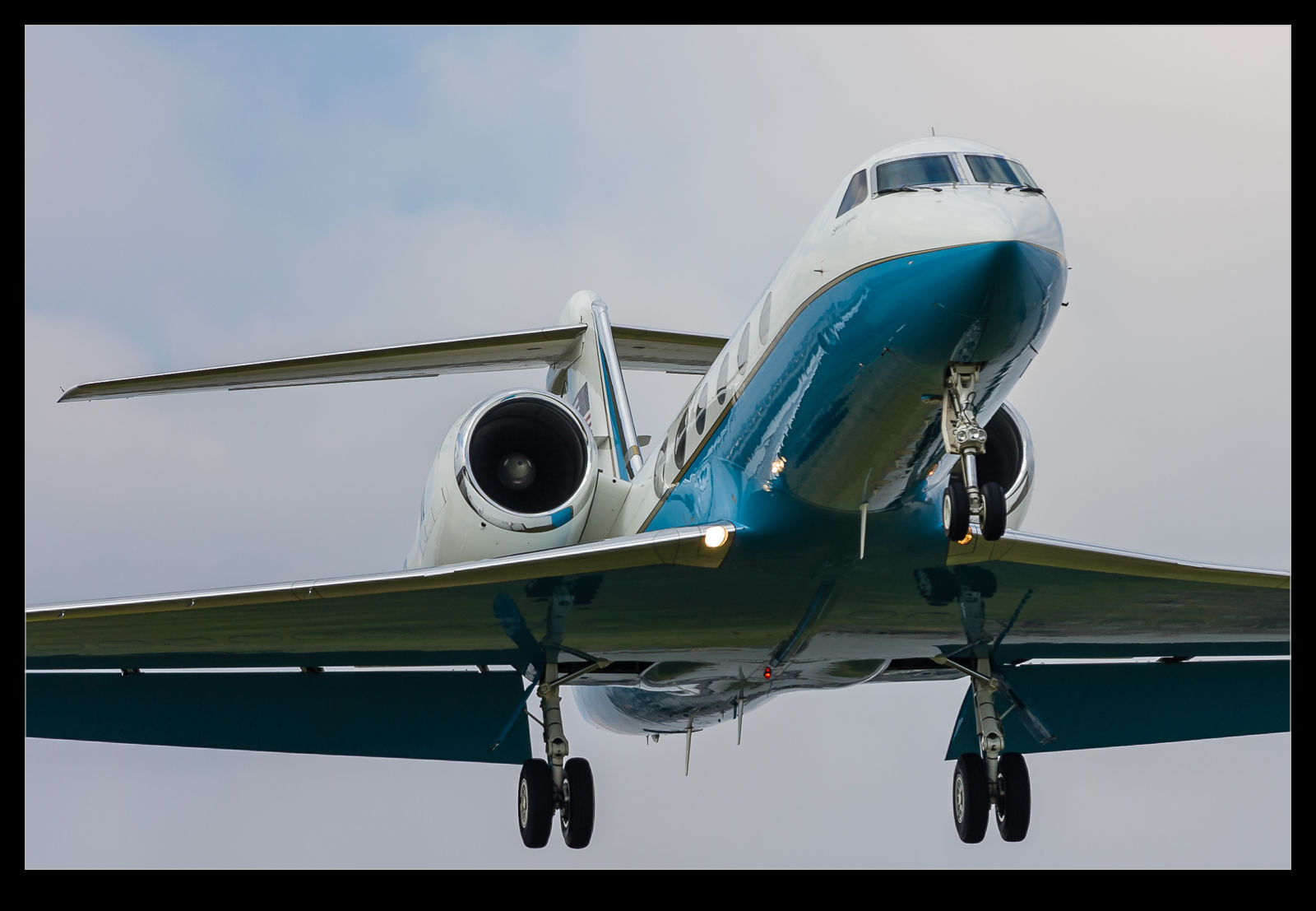 I have plenty of photos of Gulfstreams and a few photos of FAA jets – mainly flight checking Learjet 60s. However, the FAA Gulfstreams have not been something I have seen a lot of. I did have a nice chance to shoot one at Washington National many years ago, though. I did see the jets on the ramp at the south end of the field occasionally but I think this was the only time I got one airborne. It was shot from Gravelly Point so I was nice and close to it as it was on final approach. That is a great place to shoot from (or just hang out and watch the planes) and I will have to get back there at some point.
I have plenty of photos of Gulfstreams and a few photos of FAA jets – mainly flight checking Learjet 60s. However, the FAA Gulfstreams have not been something I have seen a lot of. I did have a nice chance to shoot one at Washington National many years ago, though. I did see the jets on the ramp at the south end of the field occasionally but I think this was the only time I got one airborne. It was shot from Gravelly Point so I was nice and close to it as it was on final approach. That is a great place to shoot from (or just hang out and watch the planes) and I will have to get back there at some point.
Midwest Airlines
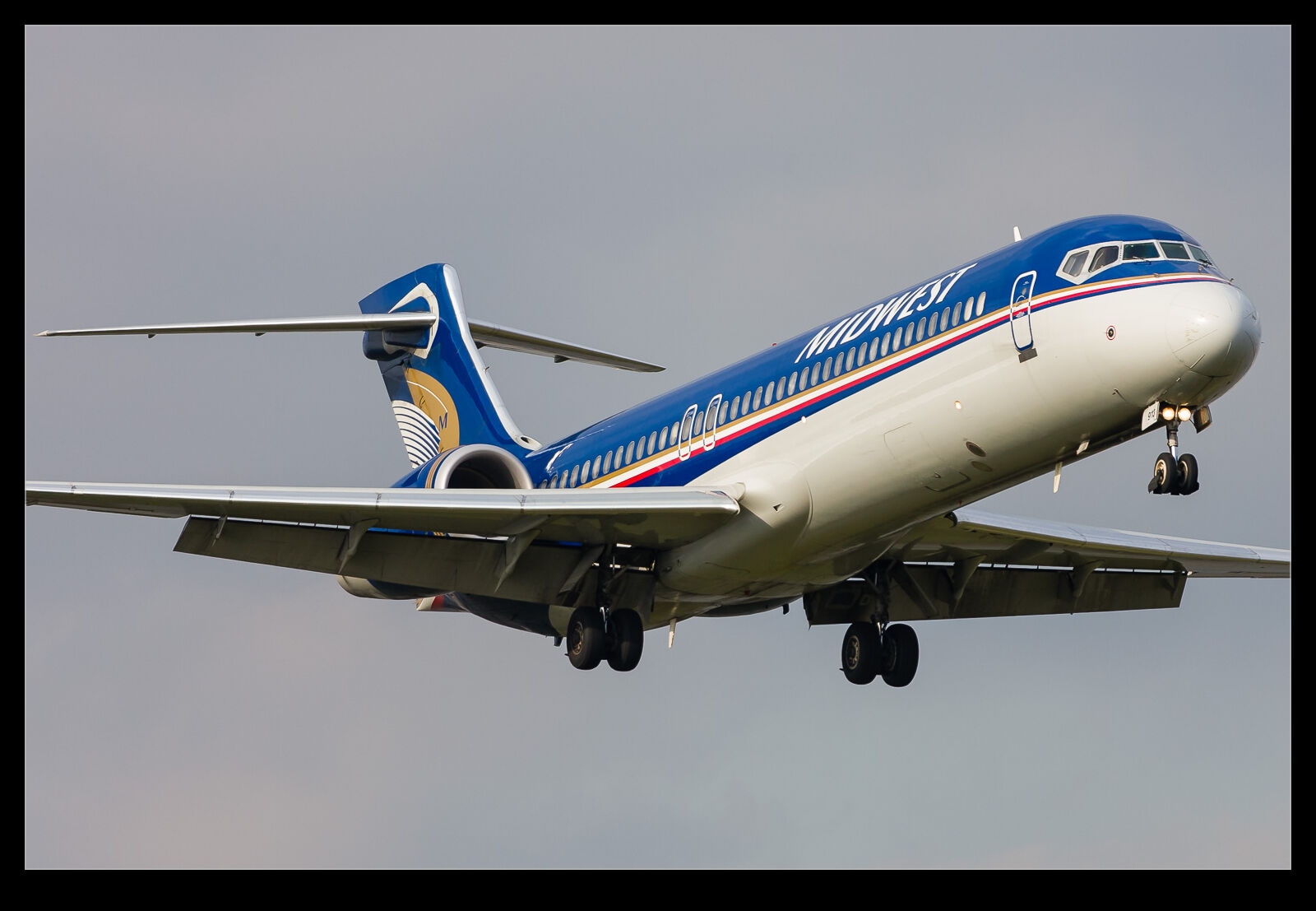 My trawl of the archives is also including airlines that have disappeared. Today’s subject is Midwest Airlines. They operated out of Milwaukee which was not far from me when I lived in Chicago but was not a place I frequented much. The only time I think I shot there was during an open day at the ANG tanker unit based there. I did get some Midwest movements that day. I actually saw more of their jets and Washington National as it happens. It wasn’t an airline I have many shots of in total but here is a selection of what I did get before they disappeared.
My trawl of the archives is also including airlines that have disappeared. Today’s subject is Midwest Airlines. They operated out of Milwaukee which was not far from me when I lived in Chicago but was not a place I frequented much. The only time I think I shot there was during an open day at the ANG tanker unit based there. I did get some Midwest movements that day. I actually saw more of their jets and Washington National as it happens. It wasn’t an airline I have many shots of in total but here is a selection of what I did get before they disappeared.
Blue Angels at Oceana (And High ISO)
 I have only been to the Oceana show once. I headed down there with my friends Ben and Simon. We weren’t terribly lucky with the weather. There was flying during the show but things were overcast and deteriorated as the show went on. The finale of the show was, naturally for a big Navy base, the Blue Angels. I was shooting with a 1D Mk IIN in those days and that was a camera that was not happy at high ISO settings.
I have only been to the Oceana show once. I headed down there with my friends Ben and Simon. We weren’t terribly lucky with the weather. There was flying during the show but things were overcast and deteriorated as the show went on. The finale of the show was, naturally for a big Navy base, the Blue Angels. I was shooting with a 1D Mk IIN in those days and that was a camera that was not happy at high ISO settings.
The problem was, the light was not good and the ISO needed to be cranked up a bit. Amusingly, if you were shooting today, the ISO levels would not be anything that caused concern. Current cameras can shoot at ISO levels without any noise levels that would have been unthinkable back then. However, I did learn something very important with this shoot. The shot above is one that I got as one of the solo jets got airborne. I used it as a test for processing.
 I processed two versions of the image, one with a lot of noise reduction dialed in and one with everything zeroed out. I think combined them in one Photoshop image and used a layer mask to show one version in one half of the image and the other for the second half. When I viewed the final image on the screen, the noise in one half was awfully apparent. It was a clear problem. However, I then printed the image. When I did so, things were very different. If you looked closely, you could see a little difference. However, when you looked from normal viewing distances, there was no obvious difference between the two.
I processed two versions of the image, one with a lot of noise reduction dialed in and one with everything zeroed out. I think combined them in one Photoshop image and used a layer mask to show one version in one half of the image and the other for the second half. When I viewed the final image on the screen, the noise in one half was awfully apparent. It was a clear problem. However, I then printed the image. When I did so, things were very different. If you looked closely, you could see a little difference. However, when you looked from normal viewing distances, there was no obvious difference between the two.
My takeaway from this is that viewing images on screens has really affected our approach to images. We get very fixated on the finest detail while the image as a whole is something we forget. We print less and less these days and the screen is a harsh tool for viewing.
Washington National
 It has been quite a while since I last flew in to National Airport in Washington DC (or Virginia if you are being accurate). My recent visit to DC took me through the airport but not through the main terminal that I have used in the last decade. Southwest operate from the original terminal which, I have to admit, I didn’t realize was still in use.
It has been quite a while since I last flew in to National Airport in Washington DC (or Virginia if you are being accurate). My recent visit to DC took me through the airport but not through the main terminal that I have used in the last decade. Southwest operate from the original terminal which, I have to admit, I didn’t realize was still in use.
 This is quite a distance from the rest of the airport and so you have a ten minute walk to get to the access to the metro station. It takes you all the way through the original terminal building which is a pretty impressive art deco structure. I did not have a camera other than that on my phone but I did grab a few quick pictures of this building which seems to have been restored as it is in good condition. It seems to be a bit of a gem that is missed by most people traveling through the airport.
This is quite a distance from the rest of the airport and so you have a ten minute walk to get to the access to the metro station. It takes you all the way through the original terminal building which is a pretty impressive art deco structure. I did not have a camera other than that on my phone but I did grab a few quick pictures of this building which seems to have been restored as it is in good condition. It seems to be a bit of a gem that is missed by most people traveling through the airport.
C-46 Commando
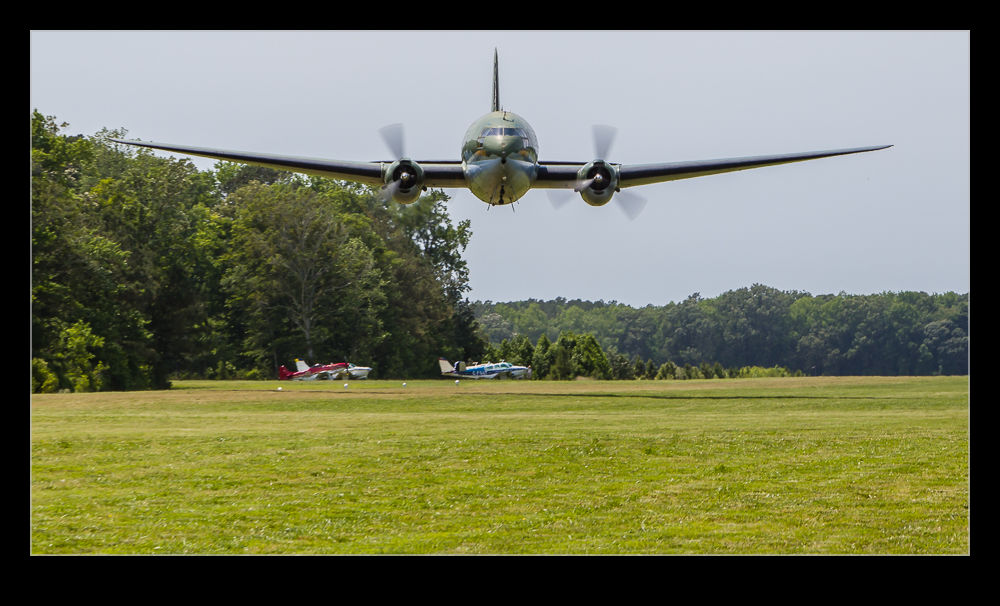 Even people how aren’t particularly into aviation have a reasonable chance of having heard of the Douglas DC-3, also known as the C-47 and the Dakota. Not only was it a hugely important aircraft in WWI but it also continued to provide the post war commercial services and, even today, to fill a niche in air transportation. Far less attention is given to one of its counterparts in the war, the Curtiss C-46 Commando. The C-46 never stuck in the public conscience in the same way and its use post war was a lot more limited.
Even people how aren’t particularly into aviation have a reasonable chance of having heard of the Douglas DC-3, also known as the C-47 and the Dakota. Not only was it a hugely important aircraft in WWI but it also continued to provide the post war commercial services and, even today, to fill a niche in air transportation. Far less attention is given to one of its counterparts in the war, the Curtiss C-46 Commando. The C-46 never stuck in the public conscience in the same way and its use post war was a lot more limited.
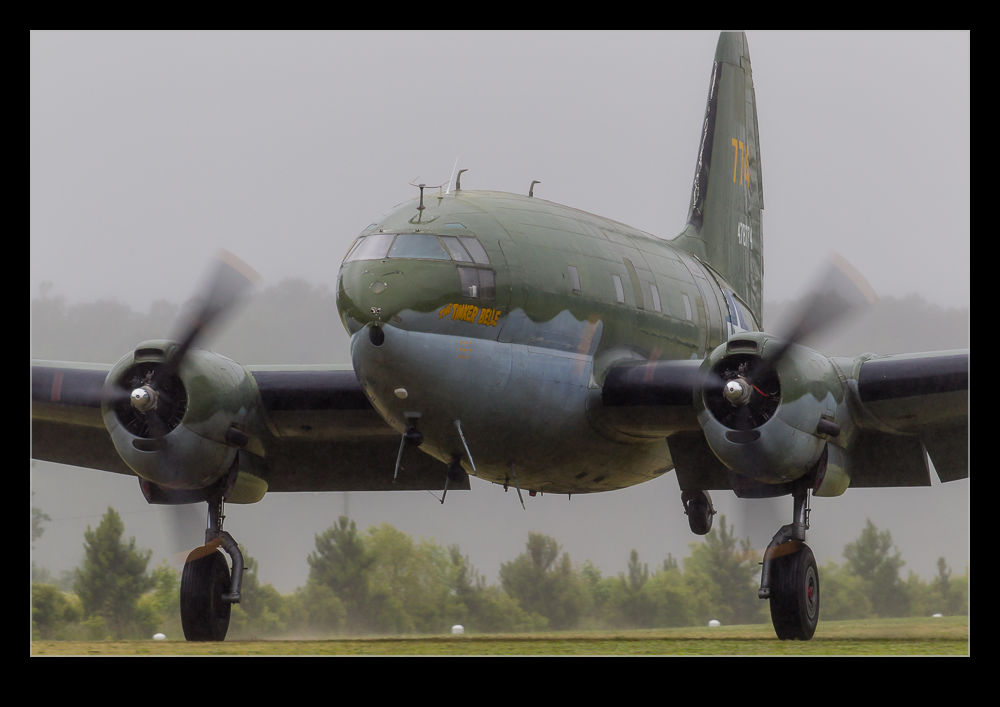 However, they didn’t all disappear and one fine example still flies at a lot of air shows. I got to see it at Pungo in Virginia a few years back at an ISAP event. The symposium was being held in Virginia Beach and we spent a couple of days at Pungo. One was the day before their annual air show. We got to look around the collection and see the aircraft in action. The C-46 put on a few great low passes and I was at one end of the field and got a great view head on.
However, they didn’t all disappear and one fine example still flies at a lot of air shows. I got to see it at Pungo in Virginia a few years back at an ISAP event. The symposium was being held in Virginia Beach and we spent a couple of days at Pungo. One was the day before their annual air show. We got to look around the collection and see the aircraft in action. The C-46 put on a few great low passes and I was at one end of the field and got a great view head on.
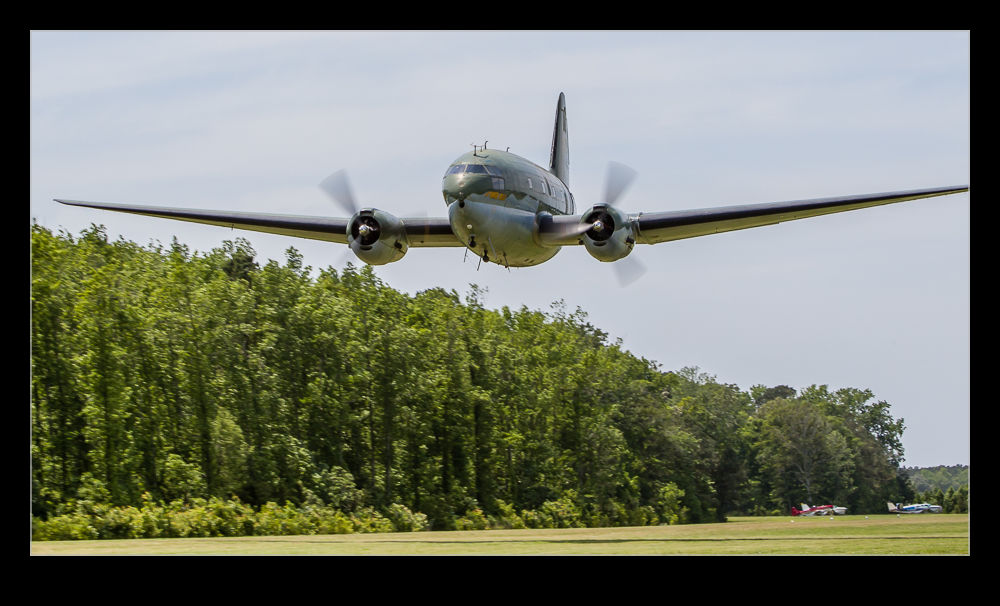 On the day of the show, the weather was not cooperating and the train came down heavily at various times throughout the day. The C-46 did fly in the gaps provided by the not so awful weather. They were not conditions conducive to good photos but I still got some of it. However, the practice day proved to be the better day for seeing this fine machine in the air.
On the day of the show, the weather was not cooperating and the train came down heavily at various times throughout the day. The C-46 did fly in the gaps provided by the not so awful weather. They were not conditions conducive to good photos but I still got some of it. However, the practice day proved to be the better day for seeing this fine machine in the air.
Virginia Air and Space Museum
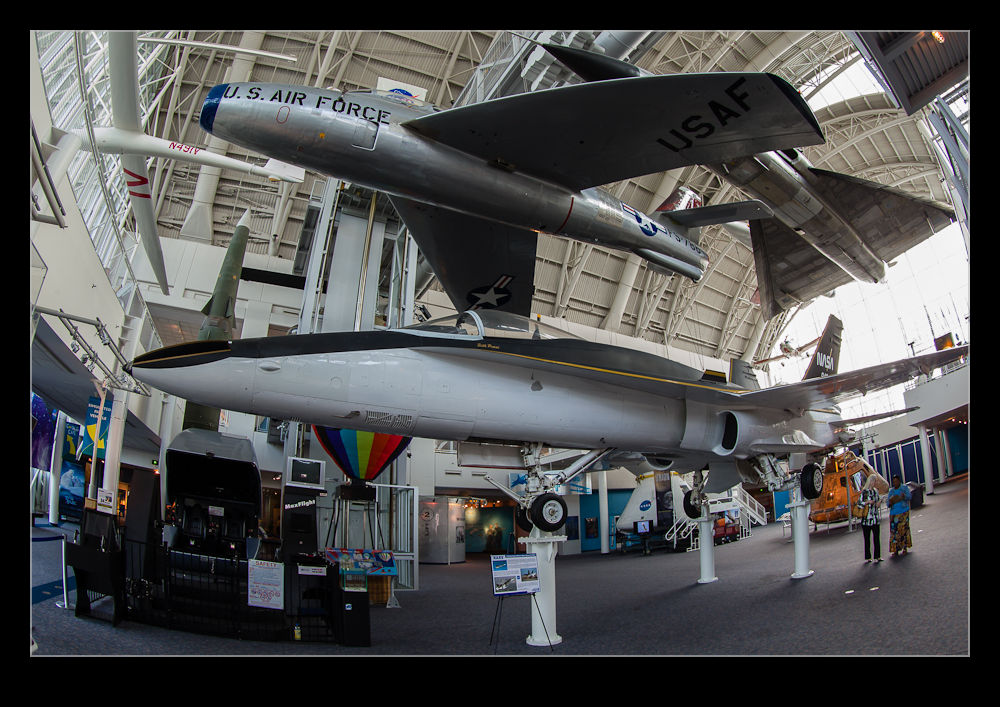 Located in Hampton Virginia is the Virginia Air and Space Museum. Hayman and I checked it out as part of our tour of local museums. I had been warned by Liza that everything inside was pretty crowded and she certainly wasn’t wrong about that but more of that later. The museum is a very modern looking facility with glazing at both end walls allowing lots of light inside. That also makes for a few problems with the levels of contrast between parts of the building but I doubt they planned it based on the needs of photographers!
Located in Hampton Virginia is the Virginia Air and Space Museum. Hayman and I checked it out as part of our tour of local museums. I had been warned by Liza that everything inside was pretty crowded and she certainly wasn’t wrong about that but more of that later. The museum is a very modern looking facility with glazing at both end walls allowing lots of light inside. That also makes for a few problems with the levels of contrast between parts of the building but I doubt they planned it based on the needs of photographers!
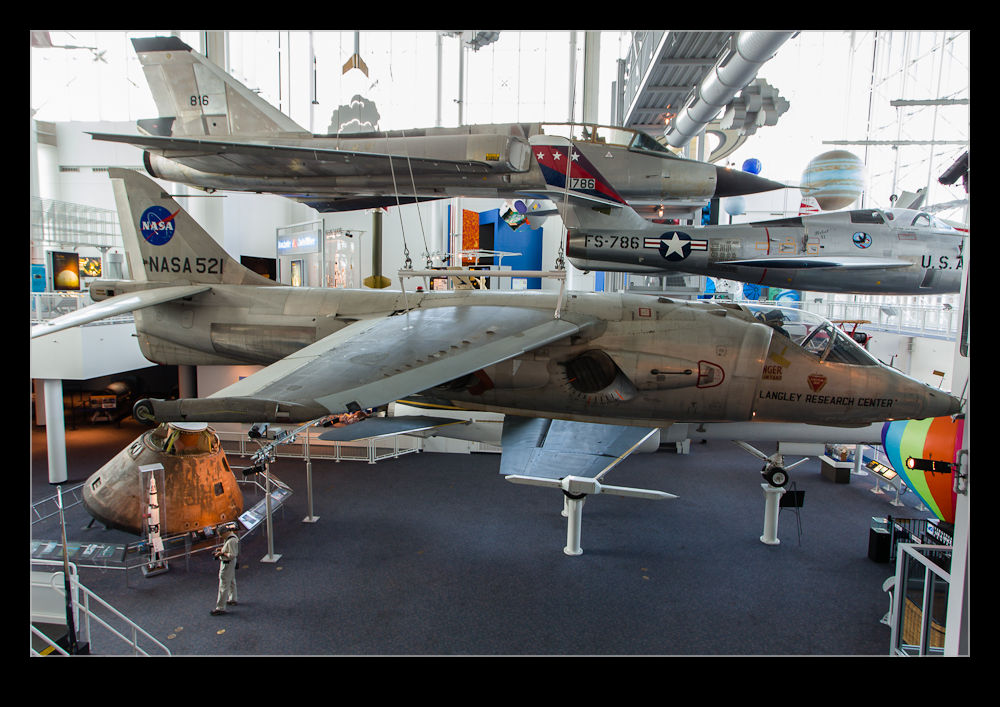 In fact, they really didn’t. The building has a great collection of aircraft. The close proximity to NASA facilities has obviously been helpful in getting access to some pretty unusual exhibits. The Apollo 14 Command Module is on display as is the HARV F/A-18 Hornet, a research F-106 and an XV-6 Kestrel among many other interesting airframes. They even have an MMU from the Space Shuttle program (although getting a shot of it from the moving elevator was tricky). The result of all of these exhibits is that they have to be squeezed in. They are usually suspended from the ceiling which makes them look more dynamic. However, they do tend to overlap a lot.
In fact, they really didn’t. The building has a great collection of aircraft. The close proximity to NASA facilities has obviously been helpful in getting access to some pretty unusual exhibits. The Apollo 14 Command Module is on display as is the HARV F/A-18 Hornet, a research F-106 and an XV-6 Kestrel among many other interesting airframes. They even have an MMU from the Space Shuttle program (although getting a shot of it from the moving elevator was tricky). The result of all of these exhibits is that they have to be squeezed in. They are usually suspended from the ceiling which makes them look more dynamic. However, they do tend to overlap a lot.
 This isn’t a problem if you are visiting to see everything which is, after all, the purpose of the museum. It does, however, make getting photos a bit more tricky. I ended up using a combination of lenses. A wide angle zoom and a fisheye zoom were the two I chose. The fish is a lens that viewers can tire of quickly but, in this case, it was a case of trying to get unobstructed shots where possible. It also let me try a few odd angles for fun too!
This isn’t a problem if you are visiting to see everything which is, after all, the purpose of the museum. It does, however, make getting photos a bit more tricky. I ended up using a combination of lenses. A wide angle zoom and a fisheye zoom were the two I chose. The fish is a lens that viewers can tire of quickly but, in this case, it was a case of trying to get unobstructed shots where possible. It also let me try a few odd angles for fun too!
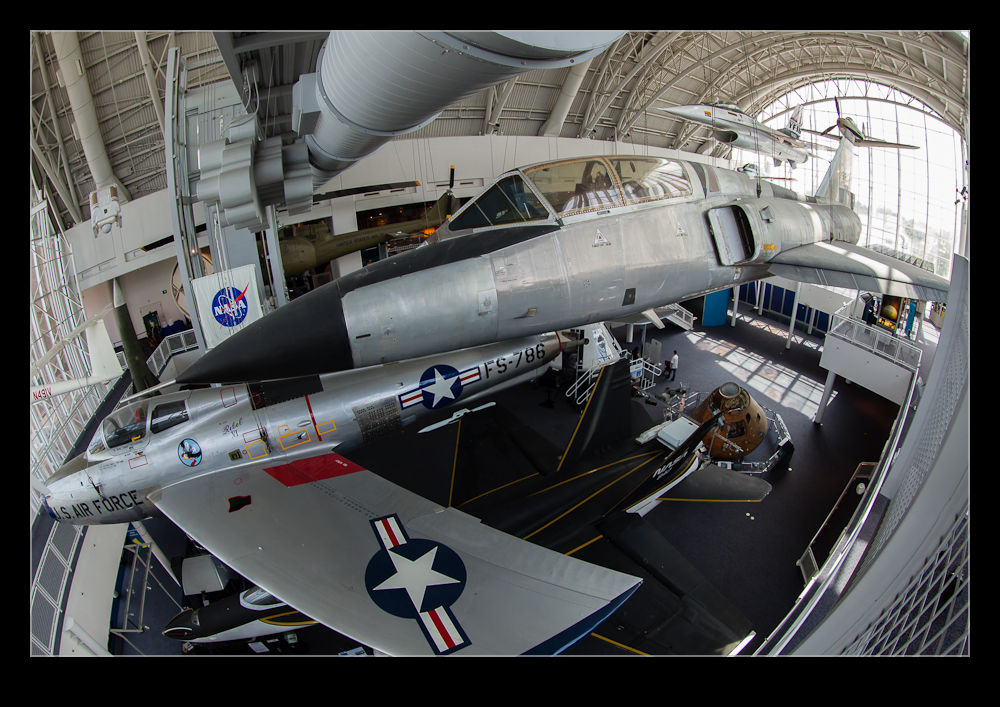 While not a museum I would go back to repeatedly, this was certainly a good place to visit. I might go back one more time with some new ideas about how to shoot certain things but even that might require the cooperation of the management! If you are passing and have a couple of hours, do pay it a visit.
While not a museum I would go back to repeatedly, this was certainly a good place to visit. I might go back one more time with some new ideas about how to shoot certain things but even that might require the cooperation of the management! If you are passing and have a couple of hours, do pay it a visit.
Curtis Commando
 I took a couple of trips to Pungo in Virginia recently to the Warbirds Museum. The first visit was part of the ISAP field trip while the second trip was for the airshow on the day after the ISAP symposium had wrapped up. The field trip was on the Friday when they were preparing for the show. The sun was out but the wind was gusting pretty high so none of the aircraft were flying.
I took a couple of trips to Pungo in Virginia recently to the Warbirds Museum. The first visit was part of the ISAP field trip while the second trip was for the airshow on the day after the ISAP symposium had wrapped up. The field trip was on the Friday when they were preparing for the show. The sun was out but the wind was gusting pretty high so none of the aircraft were flying.
 The Sunday was a lot worse. The rain was pretty constant and the cloud base was low. There was still some wind although it was a little lower. However, any chance of a display was gone. The only aircraft that performed on both days was the C-46 Commando. It showed up on the Friday to check out whether the wind was within limits. it did a low pass and determined that it wasn’t landing and off it went. Fortunately, I was in the right place for the first pass, even if a slightly longer lens would have been helpful.
The Sunday was a lot worse. The rain was pretty constant and the cloud base was low. There was still some wind although it was a little lower. However, any chance of a display was gone. The only aircraft that performed on both days was the C-46 Commando. It showed up on the Friday to check out whether the wind was within limits. it did a low pass and determined that it wasn’t landing and off it went. Fortunately, I was in the right place for the first pass, even if a slightly longer lens would have been helpful.
 On the Sunday it appeared again out of the murk. It did one pass (slightly higher than Friday) and then came in to land. I was further down the field this time and with a longer lens so was better placed for the landing. Conditions were not good since it was raining a lot but I still got a few shots.
On the Sunday it appeared again out of the murk. It did one pass (slightly higher than Friday) and then came in to land. I was further down the field this time and with a longer lens so was better placed for the landing. Conditions were not good since it was raining a lot but I still got a few shots.
 The Commando is not a common aircraft so I was glad to get to shoot it, even if the circumstances were not ideal. It was a shame to miss some of the more unusual flying items but there you go. Make the best of what you get!
The Commando is not a common aircraft so I was glad to get to shoot it, even if the circumstances were not ideal. It was a shame to miss some of the more unusual flying items but there you go. Make the best of what you get!
